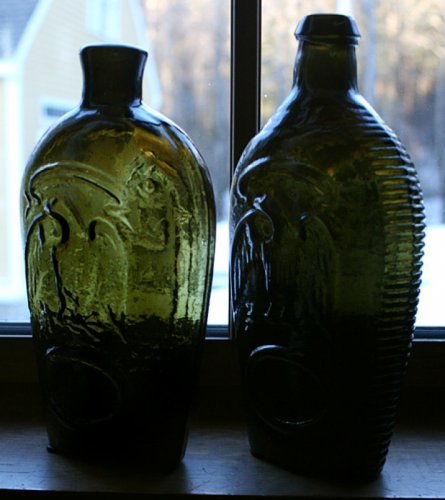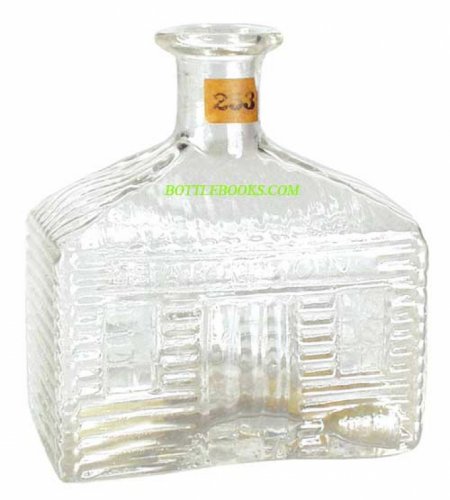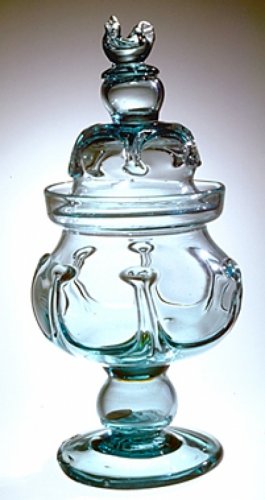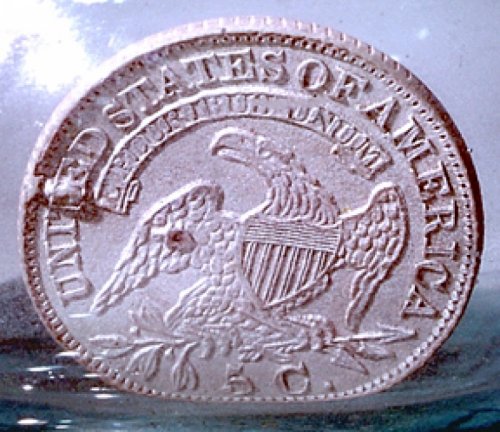earlyglass
Well-Known Member
- Joined
- Dec 21, 2004
- Messages
- 1,053
- Reaction score
- 1
- Points
- 0
ALthough McKearin makes a possible attribution to a CT glasshouse, this would NOT have been my choice based primarily upon the mold style. Not only does the Masonic arch closely match the Keene arch, the eagle is almost identical.
As for the corrugated ribs... the rib style is more closely related to the style of the GVIII-8 and GVIII-9 sunburst flasks than the Lafayette flasks.
The lip treatment... yes, very close to Mt. Vernon in style, however, this was also done at Keene. The GIV-2, as well as numerous decanters and medicine bottles have this lip application.
Color... the GIV-16 comes in a range of colors from aqua to sea green to this deep olive green. All of the colors are represented in Keene regularly, fairly often in Mt Vernon, although considered very rare for CT.
In conclusion... I believe it was produced in NH... but hell, my opinion is a bit biased!
Mike

As for the corrugated ribs... the rib style is more closely related to the style of the GVIII-8 and GVIII-9 sunburst flasks than the Lafayette flasks.
The lip treatment... yes, very close to Mt. Vernon in style, however, this was also done at Keene. The GIV-2, as well as numerous decanters and medicine bottles have this lip application.
Color... the GIV-16 comes in a range of colors from aqua to sea green to this deep olive green. All of the colors are represented in Keene regularly, fairly often in Mt Vernon, although considered very rare for CT.
In conclusion... I believe it was produced in NH... but hell, my opinion is a bit biased!
Mike









